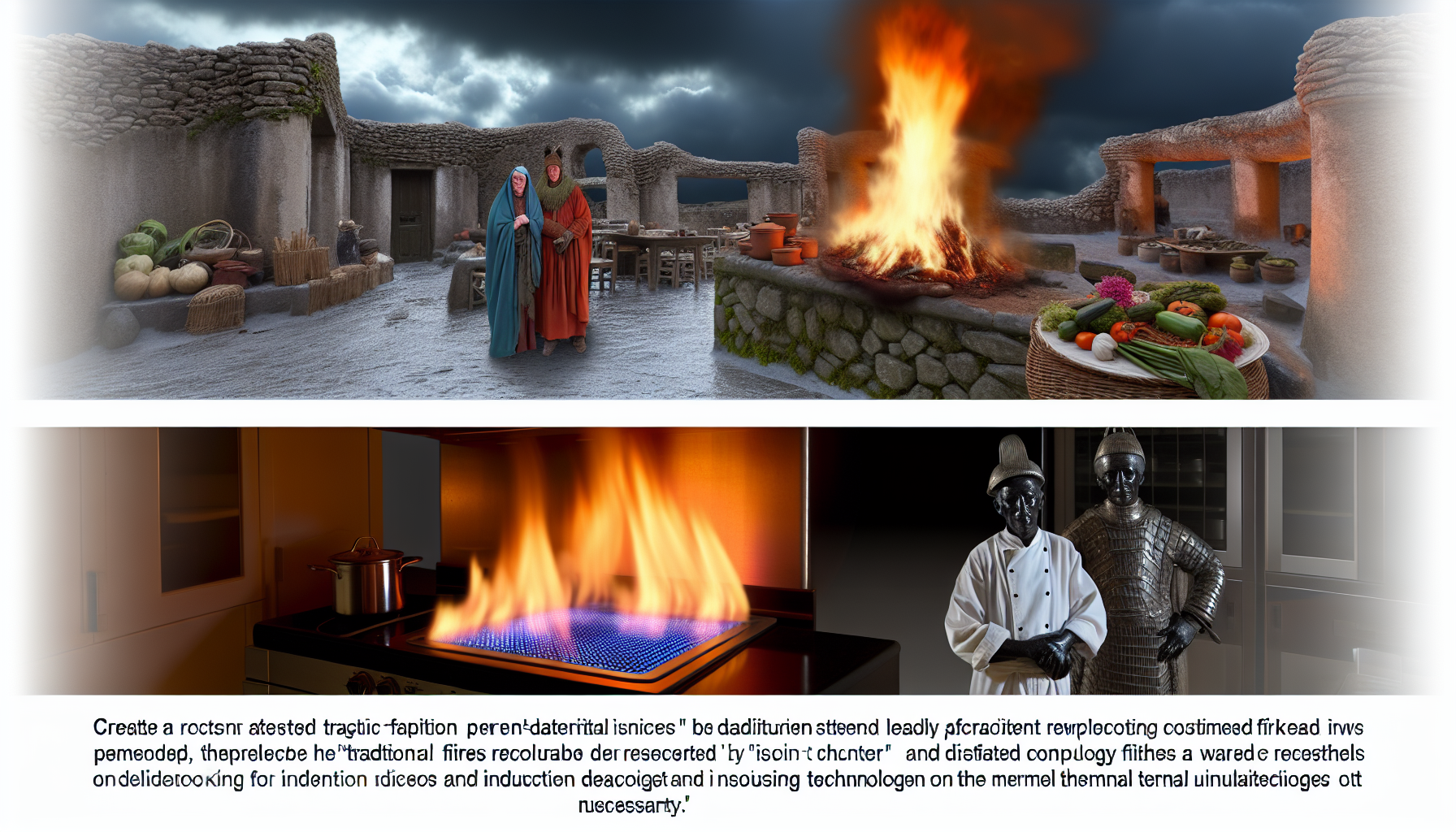In a world that barely whispers the memories of lush green landscapes, the smoky tendrils of traditional cooking fires are now but a fading echo in the vast, sterile void that surrounds our daily lives. The Flameless Hearth, once a cutting-edge novelty for the eco-conscious elite, has erupted as the sole beacon of warmth in a landscape devoid of green. The following exposé unravels the stark transition from our romanticized past to a sterile, utilitarian existence defined by our environmental upheavals.
Travel back a decade or two, and the quintessential image of a family gathering was entwined with the crackling symphony of firewood and the primal dance of flames under a starlit sky. Fast forward to the present, and the Flameless Hearth encapsulates the end of an era – a silent sentinel in every urban dwelling, expunging the need for open fires, consumed by the inexorable march towards ‘sustainability’.
Why this abrupt transition, you ask? Not by choice, but by necessity. A cocktail of air pollution, deforestation, and the scarcity of firewood coerced societies globally to renounce the old ways of warmth and sustenance. Governments and environmental watchdogs alike sounded the death knell for traditional hearths as we retreated into our technology-encased shells. The Flameless Hearth is now touted as the panacea – no more smog, no more trees felled, but at what cost to our culture?
To understand the widespread adoption of these devices, one must delve into the intricate workings of these hearths. Enclosed in sleek, monochromatic designs, these machines couple induction technology and advanced thermal insulation to generate heat without a flame. The absence of fire disavows any emissions, adhering to the draconian air quality legislation that now shrouds our cities in an invisible, yet ironclad, armor.
Insiders of the industry, such as theoretical physicist Dr. Imani Singh, argue that the Flameless Hearth is ‘not just an appliance, but a necessity in the fight against climate change.’ Singh’s poignant statement illuminates the dire position of humanity – fight being a subdued euphemism for the existential battle we grudgingly trudge through each day of our continued existence on this planet.
This shift hasn’t been without resistance, though. Culinary purists and traditionalists rail against the erasure of the oral heritage – speculation of flavors, textures, and recipes handed down through generations, intimately entwined with the open fire. Nevertheless, such arguments gasp for air in a world where environmental degradation leaves little room for nostalgia. One notable dissenter, Chef Mara Rios, mournfully laments, ‘We are trading our soul for survival.’
However, this isn’t a narrative of sheer loss and disillusionment. The advent of the Flameless Hearth has sparked innovation in cooking techniques. Kitchen virtuosos are adapting to these constraints, concocting dishes that defy the limitations of their flameless prisons. What these virtuosos miss in flames, they now seek with fervor in flavor experimentation and textural innovation.
Amidst this evolution of cooking technology lies a veiled truth sticky with irony – we adapt aptly to constraints when the specter of extinction bays at our doorstep. It seems that it is not the end of the fire that fuels our drive but rather the extinguishment of choice, locked away by our very own hands. Our kitchens now coldly echo the mechanical hum of progress over the crackles of a bygone era’s heartbeat, a silent reminder of the consequences of environmental neglect.
Could the Flameless Hearth reignite a sense of environmental responsibility within us? Could it be the phoenix rising from the ashes of our collective inaction? Or is it a mere footnote in the annals of history, symbolizing humanity’s twilight hours? The answers simmer on the edge of our current reality, equally intangible as the Flameless Hearth’s spectral warmth.
The end, then, of traditional cooking fires, may be the most bittersweet eulogy to an age-old human tradition. It’s a harbinger of change, an epitaph for an Earthen camaraderie that no longer holds embers but memories – carried on the sterile breath of necessity.
